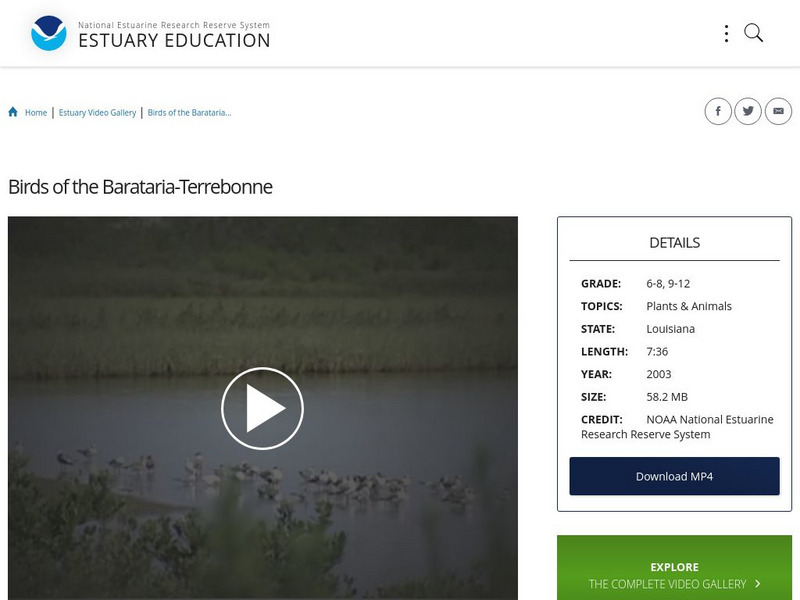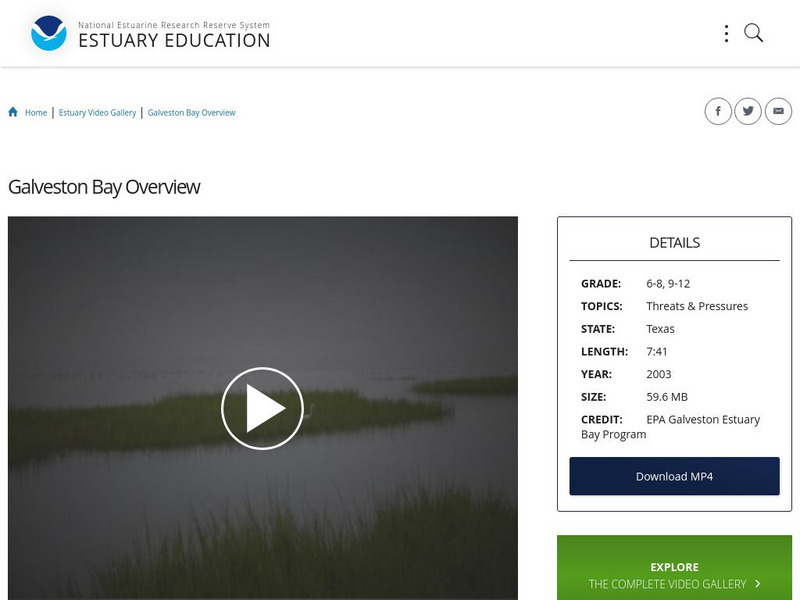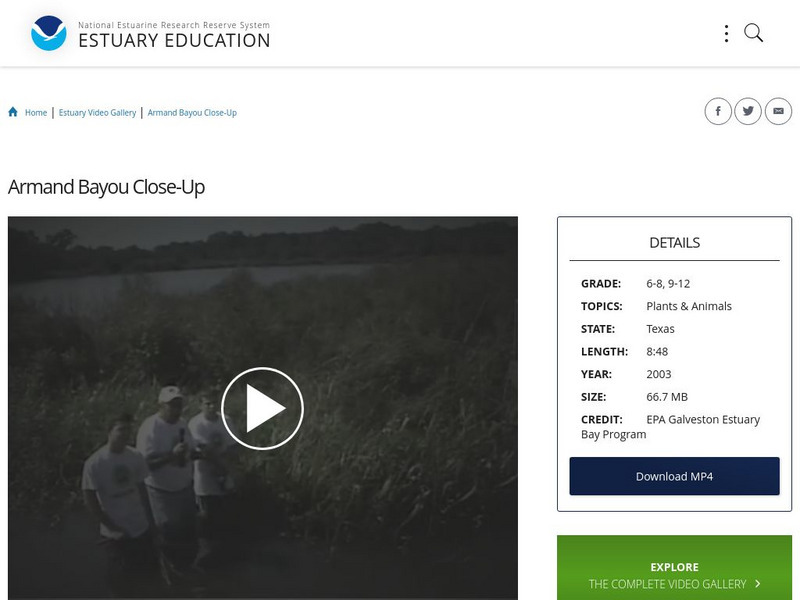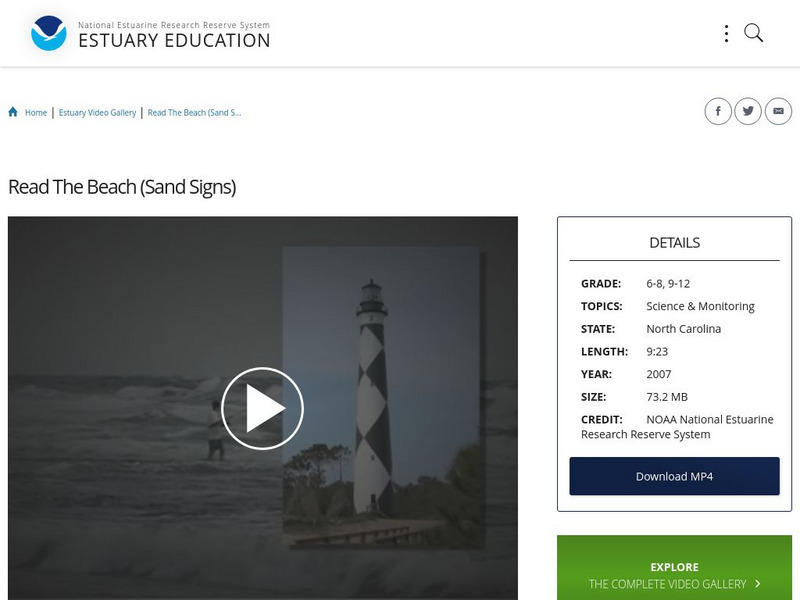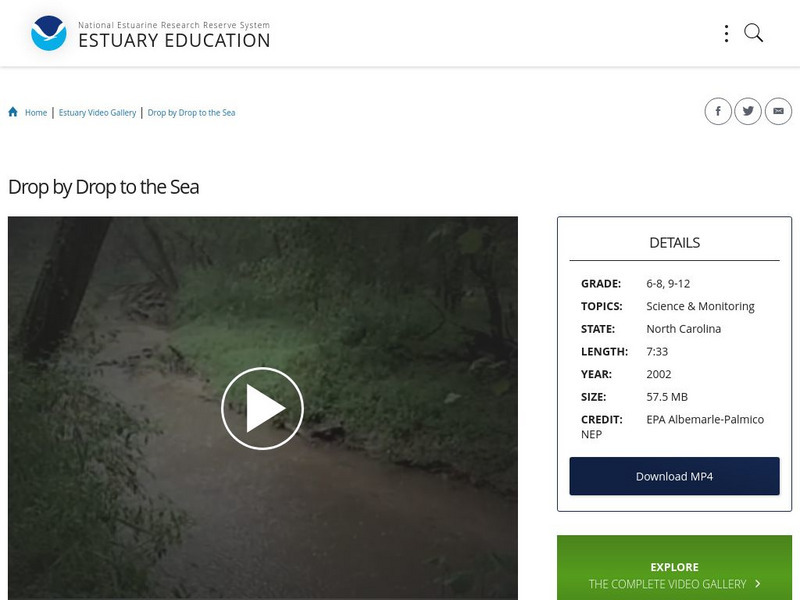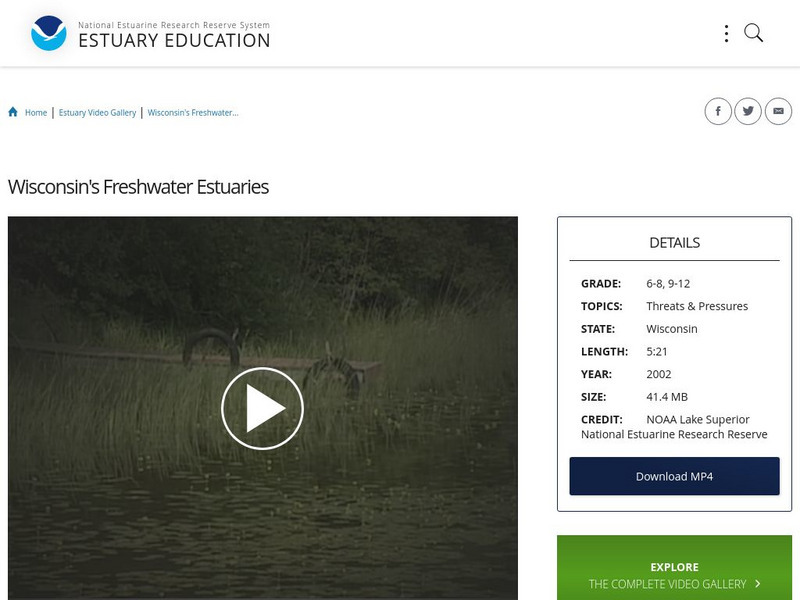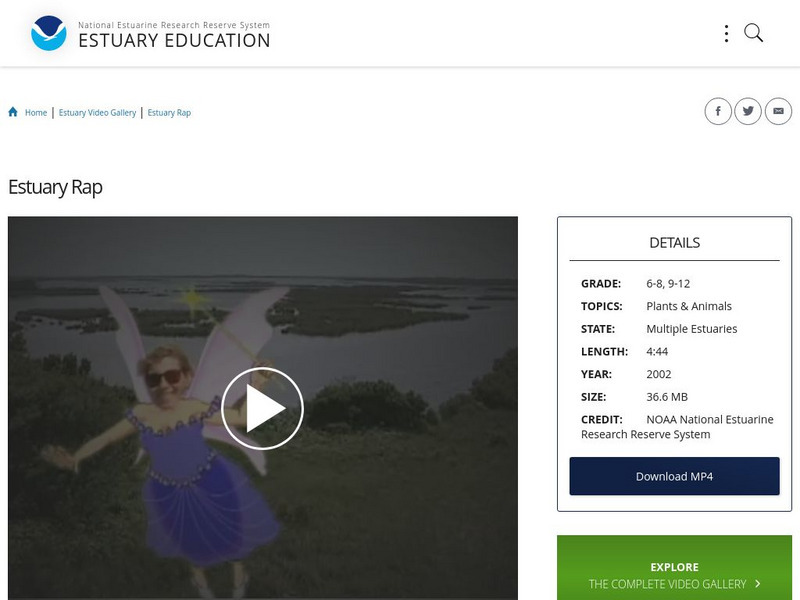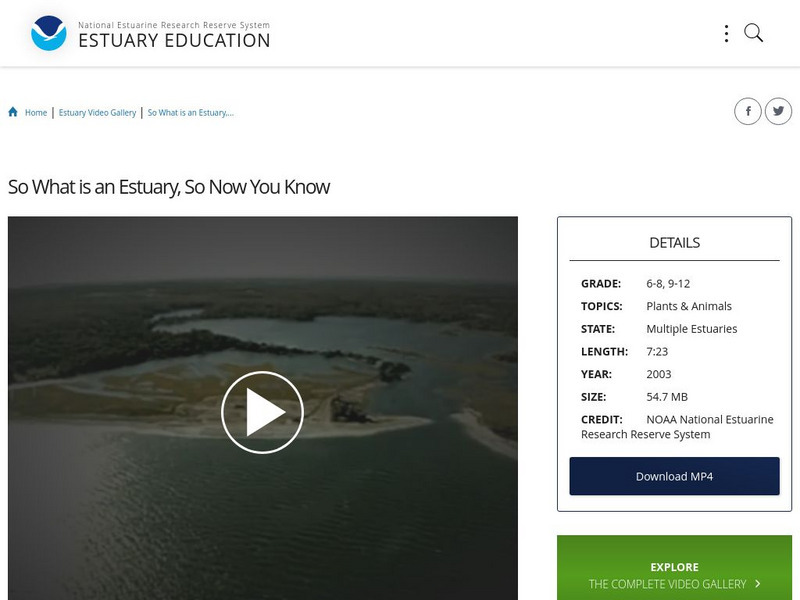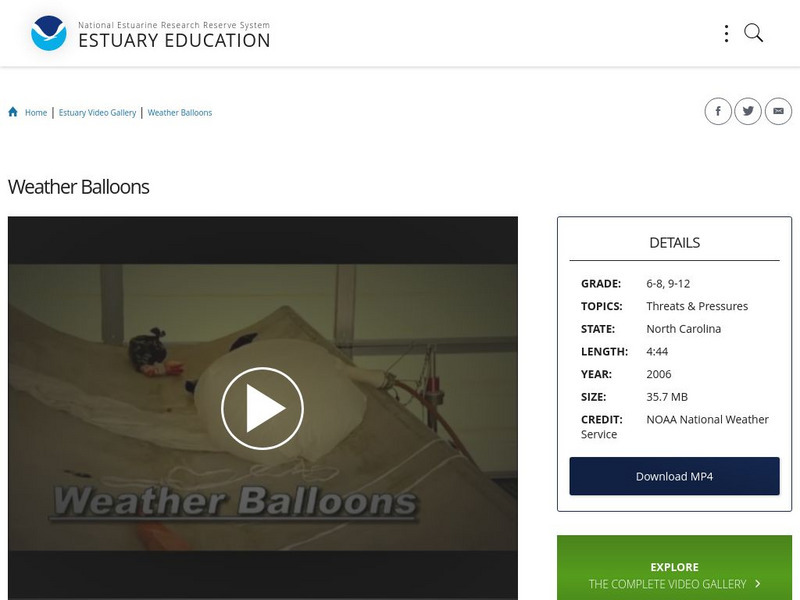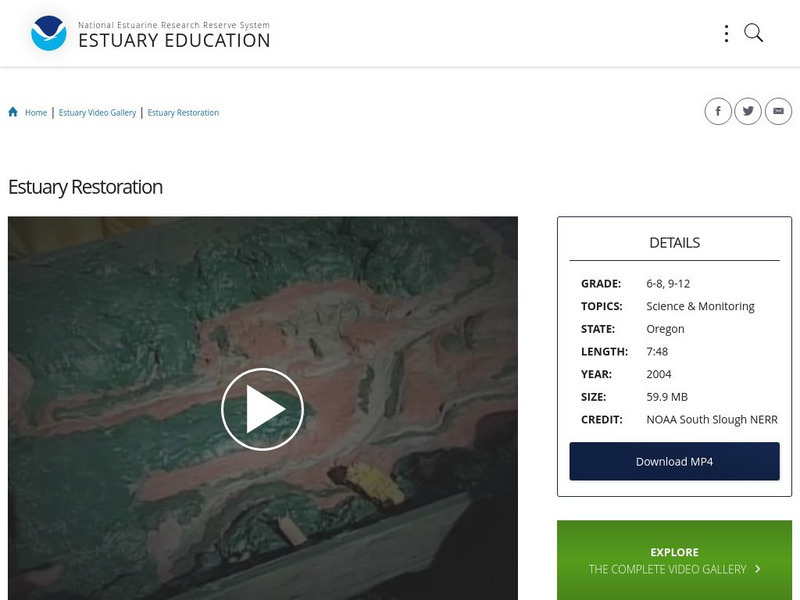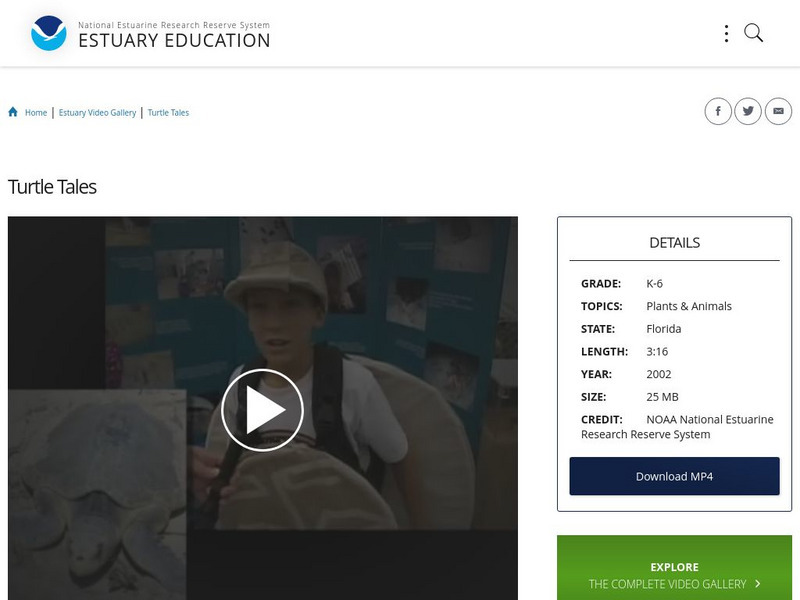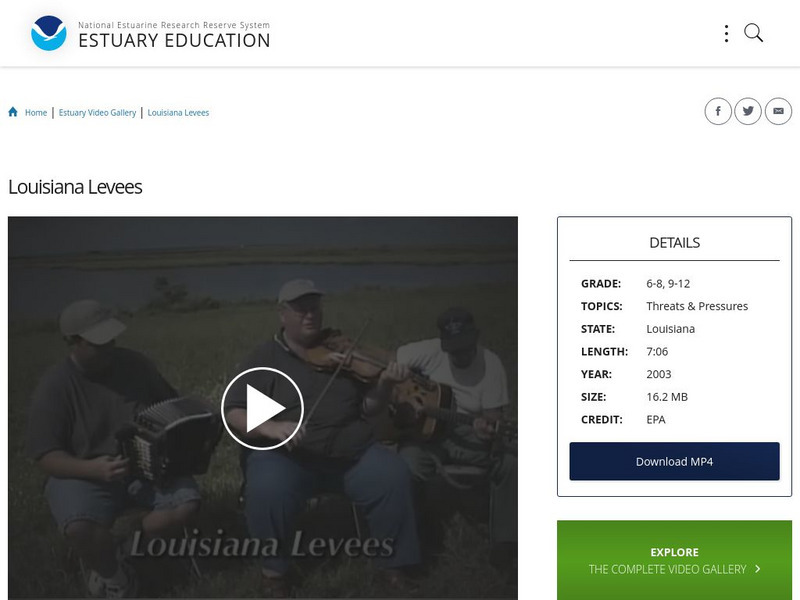Project Based Learning Teacher Resources
Find Project Based Learning lesson plans and worksheets
Showing 878 resources
NOAA
Noaa: Estuary Education: Interview With the Manatee
Here's your chance to interview the manatee, a marine mammal that finds safety and sustenance in the estuary. [6:55]
NOAA
Noaa: Estuary Education: Mangrove Q&a
Scientists answer student questions about mangroves and why these plants are a keystone species in Florida's estuaries. [7:06]
NOAA
Noaa: Estuary Education: Carnivorous Plants
Visit a beautiful bog in the Weeks Bay Reserve in Alabama, home to a variety of carnivorous plants. [10:03]
NOAA
Noaa: Estuary Education: Birds of the Barataria Terrebonne
Catch a glimpse of several species of birds found in the Barataria-Terrebonne estuary in Louisiana. [7:32]
NOAA
Noaa: Estuary Education: Creatures of Brackish Water
Find out how the salt composition in the waters of the estuary affects the organisms living there. [7:44]
NOAA
Noaa: Estuary Education: Galveston Bay Overview
A quick overview of the importance of estuary conservation in Galveston Bay with Helen Drummond, director of the Galveston Bay Estuary Program. [7:41]
NOAA
Noaa: Estuary Education: Texas Alligators Q&a
Students ask questions about the American Alligator, and an Armand Bayou Nature Center scientist provides answers. [3:06]
NOAA
Noaa: Estuary Education: Armand Bayou Close Up
Get wet and muddy with scientist Eddie Seidensticker as he and two students take an up-close look at the plants of Armand Bayou in Texas. [8:42]
NOAA
Noaa: Estuary Education: Lionfish: Estuary Invaders?
Invasive species can disrupt an environment. Lionfish, native to the Indian and Pacific Oceans, are showing up off the East Coast of the United States. What problems will these Estuary Invaders bring? [9:14]
NOAA
Noaa: Estuary Education: Read the Beach (Sand Signs)
A scientist teaches students how to gather evidence and make scientific inferences about the beach just by looking at the sand. [9:23]
NOAA
Noaa: Estuary Education: Read the Beach (Sand Science)
Geologist Dr. Jeff Warren shows how the beach is built and performs a "fizzy" experiment with beach sand to show evidence of its physical and chemical composition. [8:14]
NOAA
Noaa: Estuary Education: Turtle Hospital
All species of sea turtles are threatened or endangered. Meet a scientist who works with sick or injured sea turtles and find out what happens in a turtle hospital. [9:08]
NOAA
Noaa: Estuary Education: Drop by Drop to the Sea
Follow rain running off parking lots and roads in central North Carolina on a journey to the estuary hundreds of miles away. Good footage showing runoff from areas of development and beautiful estuary montage at the end. [7:30]
NOAA
Noaa: Estuary Education: Wisconsin's Freshwater Estuaries
Find out about Wisconsin's delicate freshwater estuary environments along Lake Superior. Includes ecosystems in the Apostle Islands in addition to the Flag, Cranberry, Bark, Sand, Rasberry, Lost Creek, Whittlesey Creek, Fish Creek,...
NOAA
Noaa: Estuary Education: Estuary Rap
Student rappers use humor and student interview clips to explain the importance of an estuary. [4:43]
NOAA
Noaa: Estuary Education: So What Is an Estuary, So Now You Know
Produced by the Association of National Estuary Programs as a fun explanation of what estuaries are and why they are important. [7:23]
NOAA
Noaa: Estuary Education: Weather Balloons
See how weather forecasting and weather research are conducted using weather balloons. Find out how these floating instruments work, and what scientific the data they send back to meteorologists. [4:44]
NOAA
Noaa: Estuary Education: Estuary Restoration
A look at how and why the South Slough estuary has been changed by human use, and how we are now trying to rebuild or restore the estuary to original condition. Specialized techniques for restoration include use of high explosives. [7:48]
NOAA
Noaa: Estuary Education: Water Quality Specifics: Measuring Nitrogen
See how students use classroom tools to measure estuarine water quality. Students sample estuary water for nitrogen using the Colorimeter. [3:03]
NOAA
Noaa: Estuary Education: Urban Estuaries: Toxic Legacy
Pollution in urban estuaries is a serious problem. Cleaning up this toxic legacy is a long-term and expensive proposition. [7:05]
NOAA
Noaa: Estuary Education: Turtle Tales
Meet a middle-school student who works to protect turtles found in the estuary. [3:16]
NOAA
Noaa: Estuary Education: Louisiana Levees
Interview with Windell Curole, Levee Manager, South Lafourche Parrish one year before Hurricane Katrina. He discusses living in and around the estuary, and how the levee system affects the water quality there. [7:06]
Other
Teach Hub: Teaching Strategies to Keep Students Engaged in Learning
Through different teaching strategies like project-based learning and the flipped classroom, new techniques have changed the way teachers teach and learners learn. Here are a few more teaching strategies that are guaranteed to keep your...
ClassFlow
Class Flow: Constellations
[Free Registration/Login Required] This flipchart offers images and ideas for interdisciplinary study of the constellations. It suggests project based learning activities and a WebQuest link.





